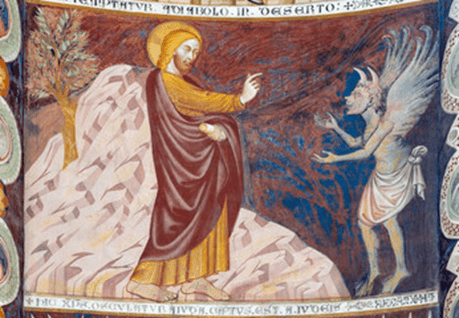
Long ago in a time before the internet, the realm of society labeled social deviance shameful. Gendered social expectations in medieval Western Europe contained people publicly. While this public confinement existed in many forms, sexual transgressions drew an important line in what was and wasn’t allowed for men and women. While these lines remain today, however faded, the methods in which people explore and escape expanded with time and technology. In the medieval period, however, the supernatural served as an escape and/or an excuse for certain misdemeanors: namely, adultery.
Sexual beings shadow medieval lore. From fairies that lure unexpected humans into a sexual encounter to sexual demons that enter rooms in the dark of night, stories of supernatural sexual partners pervade belief. Is it a wish fulfillment of an erotic fantasy that would otherwise have been forbade or a victimized explanation of unwanted repercussion? Perhaps a villainization through supernatural association of the human culprit? As with any proper story type, it is all of these things. What purpose a story served is heavily influenced by three things: gender, social circumstance, and fantasy.

The gender of a supernatural sexual partner was a detrimental factor in how a story unfolded. If the magical being is female, she possesses an ethereal beauty, can be found in the wilderness – outside society – and is most likely naked. How ever could a mortal man resist? A prime example of a female supernatural partner is the leannán sidhe in Celtic folklore. Also called the Vampire Fairy, she is a female fairy that seduces men and slowly drains the life from them over time. She is a figure of beauty and serves as a muse for the man during their time together. Supernatural women are portrayed as a wild fantasy at the edge of civilization that both indulge a male’s desire yet absorb any blame through otherworldly influences.

When these stories involve human women who are seduced by a male supernatural suitor, the man is typically a fairy and/or demon disguised as a young and attractive man and the woman either piously resists or sinfully submits to the temptation of the fairy/demon’s advances. Christian Saints often served as a way to repel the demons. In the twelfth century, the biographer, Thomas of Monmouth, recorded an example of this story type where an incubus (a male sex demon) seduced a pious English woman. He would sneak into her bed every night and offer her gifts of jewelry and clothes in return. In many such stories, the incubi are invisible. These stories could potentially serve as an explanation for an unexpected pregnancy.
Supernatural suitors are a way to indulge erotic fantasies and explain sexual deviance by disguising it in a more acceptable story of victims, villains, and wish fulfillments. The mortal women in these story types are either victimized or villainized. When the fairy is female, however, the mortal male’s wish fulfillment is present, but the mortal male is less commonly villainized. While this demonstrates the double standard of expectations and portrayals of gender in the medieval period, it also teaches a universal technique: how to get away with adultery.
By Jenna Ehlinger
Sources
Green, Richard Firth. “Incubi Fairies,” In Elf Queens and Holy Friars: Fairy Beliefs and the
Medieval Church, 76-109. Philadelphia: University of Pennsylvania Press, 2016.
Jenkins, Richard P. “Witches and Fairies: Supernatural Aggression and Deviance Among the
Irish Peasantry.” In The Good People: New Fairylore Essays, 302-335. University Press of Kentucky, 1997.
Map, Walter. “Again of Such Apparitions,” From De Nugis Curialium: Courtiers’ Trifles, ed. and
trans. M. R. James, C. N. L. Brooke, and R. A. B. Mynors, 155-159. Oxford University Press, 1983.
Ó Catháin, Séamas. “Tricking the Fairy Suitor (ML 6000): A Rare Peripheral Relic?” Béaloideas
59 (1991): 145-59.
All Images from Adobe Stock
